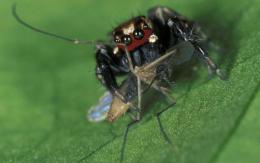A couple of weeks ago, over at America’s Podiatrist, Dr. Nirenberg asked, “Can Barefoot Running & Walking Fix Flat Feet?” He references a study, The Influence of Footwear on the Prevalence of Flat Foot: A Survey of 2300 Children, by Udaya Bhaskara Rao and Benjamin Joseph (The Journal of Bone and Joint Surgery, Vol. 74-B, No. 4, July 1992, p. 525. The study was conducted on children in India.
Below is the criteria they used for grading an arch as high, normal, or flat:

Definitions of arch types
What they found was that while 2.8% of the children who went barefoot all the time had “flat” feet, 8.6% of those who wore footwear had “flat” feet. They also found that the more shoe-like the footwear, the more of the children had “flat” feet.
There was a related study done a few years later, “The Influence of Footwear on the Prevalence of Flat Foot: A Survey of 1846 Skeletally Mature Adults“, by V. Sachithanandam and Benjamin Joseph (The Journal of Bone and Joint Surgery, Vol. 77-B, No. 2, March 1995, p. 254. In this one, they compared the prevalence of flat feet based on the reported age at which the adult started wearing shoes. They found a 1.75% rate of flat feet in those who didn’t start wearing shoes until over the age of 16, and about 3.25% for those who started wearing shoes earlier.
It sure looks like wearing shoes contributes to a lower arch.
But what does that have to do with flat feet? Many folks confuse a flat foot (that is, a foot with a low arch) with fallen arches. In fact, Dr. Nirenberg says as much as he starts his blog entry:
Flat feet is a condition where the arch of the feet undergo collapse and flatten: That is why it is often also referred to as fallen arches. Individuals with flat feet can suffer from a variety of foot ailments, pain, and fatigue, which can also extend to the legs and back.
I do not think this correctly describes the situation. To understand what is going on, we have to go way back to a much earlier study, “Conclusions Drawn from a Comparative Study of the Feet of Barefooted and Shoe-wearing Peoples, by Phil. Hoffman, M.D., St. Louis. (The American Journal of Orthopedic Surgery (1905)). Dr. Hoffman had a chance to examine barefoot natives at the Louisiana Purchase Exposition in 1904. He checked their arches and found a fair proportion of them did have low arches. However, and this is important, he did not see any pathologies associated with those “flat” feet. As he put it
If these statistics are a fair index for all feet, the conclusion is justified that weakness of the longitudinal arch rarely results in its depression, and that flat foot as a pathological entity hardly exists.
The height of the arch appeared to bear no relationship to the gait. In shoe-wearers, the affection commonly called flat foot is often associated with more than ordinary eversion of the foot on standing and walking. This eversion is due not to the low arch, but to the associated weakness or stiffness of the joints of the foot and weakness of the muscles controlling them.
In other words, among the barefooted, having a low arch, or “flat” feet, has nothing to do with whether you have a “fallen” or “weak” arch. A weak or fallen arch, a result of wearing shoes and thereby failing to keep those muscles and tendons and ligaments strong (also pointed out by Dr. Nirenberg), is a different condition than merely having a flat foot (or naturally low arch).
So, can walking and running barefoot fix a flat foot? No. But can it fix a fallen arch? Almost assuredly. Will it raise the arch? Maybe.
Obviously, as any physical therapist can tell you, using a previously inactive body part will strengthen it. It will not only strengthen that part, but all the other parts associated with it. Muscles, bones, ligaments, tendons will all respond to the greater use. I can see how it would be possible that toning all those parts could raise the arch as they are all strengthened. Obviously, there is some anecdotal evidence that this is so, but I’ve not seen studies that demonstrate it.
However, as the Hoffman study shows, who cares? It doesn’t matter! It’s not the height of the arch that matters, it is the underlying physiological structure, and you get that from going barefoot whether your arch rises or not.
In my own case, I have no idea if my arches are really raised since I started going barefoot. They do look raised, though. However, much of that just could be the appearance caused by the much thicker pads on my feet now. Since the pads get thicker on the non-arch parts of the foot, that can give the appearance of a higher arch.
One more point: There are reports of over-use injuries in those who just start going barefoot. These are the sorts of people who try to run long distance before all the muscles and bones and stuff have had a chance to properly strengthen (this can take around 6 weeks, and probably it is not fully there until 6 months). Since I also play tennis, I can relate this to tennis. If you never played tennis before and suddenly picked up the sport and starting playing hours on end, hitting as hard as you can, you have a very good chance of picking up tennis elbow. The parts of your arm need strengthening first, and it has to be worked up to (it also helps to work on technique!). Same with any sort of extended or extreme barefooting.


